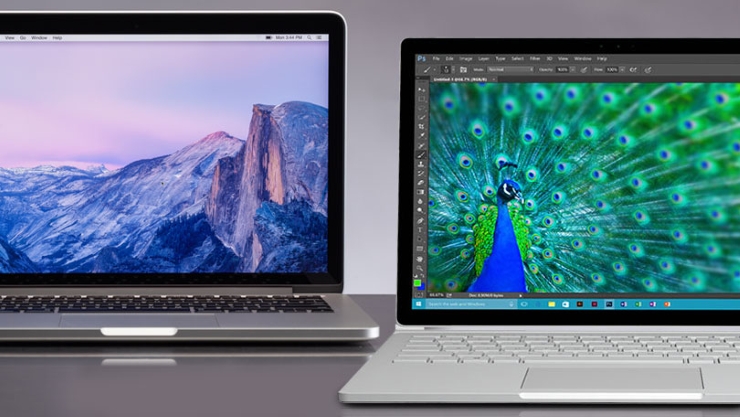Thinking of switching from an Apple MacBook Pro to a Microsoft Surface Book? Here is how you can ease the transition

You love your Mac, but whether it is for work reasons, or simply the yearning to try something new, those Microsoft Surface Book 2-in-1’s seem almost too good to pass up.
In 2015, Microsoft pitched its brand new surface Book laptop/tablet against the Apple MacBook Pro, boasting competitive specs, and user experience through a completely reinvented Microsoft Windows operating system.
The Surface Book’s debut came amidst mixed reviews, as it was the first of its kind, with consumers still struggling to get their heads around a Microsoft slowly turning into a mirror image of Apple Inc, as it finally tapped into the premium hardware market.
With that said, it eventually gained traction, reaching widespread acceptance and praise, even in the face of slumping PC sales, as well as the fact that it had to stack against Apple’s measuring stick.
There is no way around it: it’s not easy to compete against MacBooks. Apple had a whole 40+ years to perfect its formula, not only in regard to technology, but also showmanship and brand identity, which are lessons Microsoft has been taking as quickly as it could, with excellent results so far.
As a MacBook owner, you may be wondering why would you want to switch to a Surface Book, and the answer is “don’t”. If you are happy with a MacBook, and there is no particular reason to switch, sticking with a MacBook is the easiest way to keep things simple.
However, if you have experience using Windows 10 on other computers, and the prospect to going with Big Blue seem anything but scary, checking out Surface Book will most definitely pay off.
The biggest annoyance about switching to a completely different operating system and machine, is about moving data, and reorganizing it into a new computer with an unfamiliar operating system.
On a Mac, users operate under a very “Linux-like” paradigm, where files are organized in folders grouped under their corresponding device and file system denomination, which is the label of their drives. There is technically no such thing as C:\ drive. With that said, the organization is pretty much the same. There are still users folders that can be used to store all sorts of data, like pictures, videos, work documents, and music. When switching to Windows, the paradigm shift is not very dramatic, as data can continued to be stored in much of a similar way, on a new Windows 10 PC, like the Surface Book.
Just like on a Mac, Windows 10 makes use of apps for many things, including system settings. In fact, the Settings app is where users will go to change the behavior and parameters of their Windows 10 user experience. For everything else that is not covered by desktop applications, Store apps cover a wide range of needs and wants, from games, to productivity, and beyond.
One thing that Windows 10 has over macOS, is a built-in security suite, which might turn into something that we might eventually see on a Mac as well, considering that for the first time, hackers are turning up the heat on cyber-attacks on Macs.
In this regard, Windows Defender, Microsoft’s own security software, does a pretty good job protecting data and privacy, and works even better on computers with hardware-based security features like TPM 2.0 and BitLocker.
Finally, for those who want to use their laptops for more than just work of browsing the web, Surface Book comes with an integrated discrete NVIDIA GPU, which allows to play high-end gaming titles at reasonable settings.
Ready to shop?
PortableOne has the best deals on Microsoft Surface Book laptops, and more powerful devices for work and downtime.